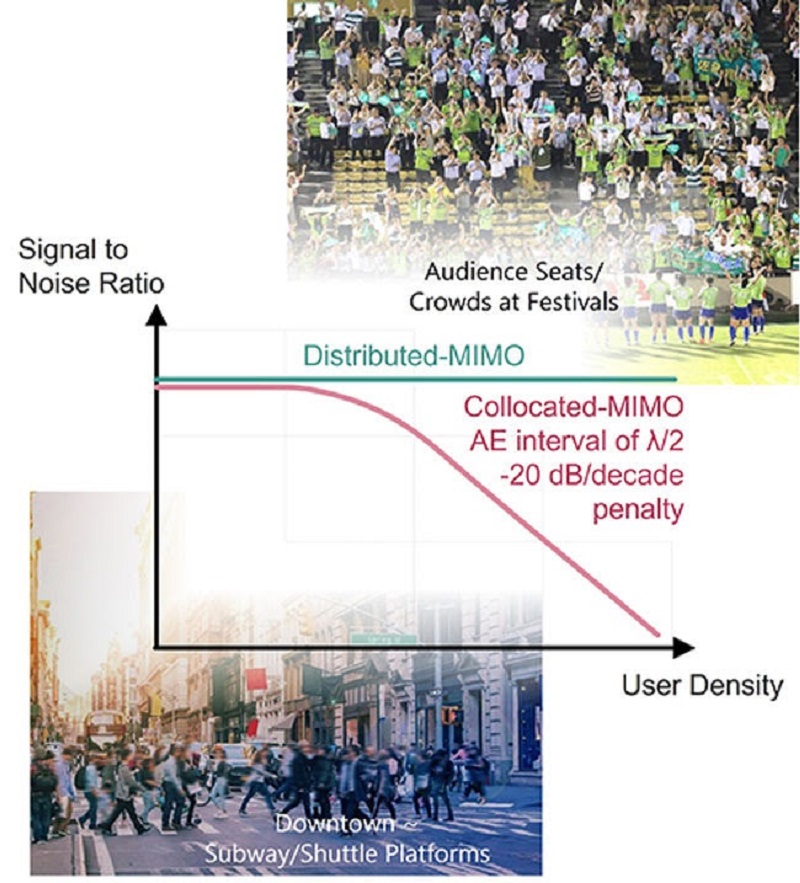NEC Demonstrates Advantages of Distributed MIMO in Ultra-High-Density User Environments
10th July 2023, Kathmandu
NEC Corporation has conducted verification tests to evaluate the performance of massive-MIMO (mMIMO)(1) utilizing the 28GHz band. During these tests, NEC verified mMIMO’s ability to reliably provide large-capacity transmission in environments with extremely high user densities of 4 to 8 users per square meter, such as stadiums and crowded urban areas. Moreover, the tests demonstrated that distributed-MIMO configurations(2) can maintain better data transmission than conventional collocated MIMO configurations(3).
mMIMO mobile access base stations enable multiple simultaneous user connections and achieve higher cell capacity with a combination of spatial, time division, and frequency division multiplexing.
Using a 28GHz-band prototype device(4), NEC quantitatively compared users’ signal-to-noise ratio (SNR) in both distributed-MIMO and collocated-MIMO using a newly developed index for this demonstration.
The SNR of spatial multiplexing in mMIMO is influenced by the amount of leaked power from beams to other users in the same cell.
However, in comparison to collocated-MIMO configurations, NEC confirmed that distributed-MIMO could maintain SNR independent of user density depending on the sharpness and level of orthogonality of the beams.
Details on this research have been published and presented at the International Microwave Symposium 2023 in San Diego, CA, USA.
Going forward, in line with the advancement of 5G and the development of 6G, NEC will continue to develop technologies aimed at even higher speeds, larger capacities, and greater cost efficiency.
(1) Massive-MIMO
A Multiple Input Multiple Output (MIMO) technique that enables simultaneous multiple radio communication connections using a massive number of transceivers.
(2) Distributed-MIMO
An approach of Massive-MIMO where a large number of antennas are distributed rather than being placed in a single array.
(3) Collocated-MIMO
A conventional approach of Massive-MIMO is where the antenna element and transceivers are arranged in a location with usually half wavelength intervals.
(4) NEC develops a millimeter-wave distributed antenna radio unit to improve the channel quality for indoor 5G applications. Click Here







